One of the great things about Mahjong is the fabulous variations that exist within the strict parameters of the game tiles.
The tiles with numbers were clearly intended for the export market. The other tiles may have been as well, but often carvers did not put numbers on the tiles that were readily recognizable: the One and Two Dots can be easily understood.
Here you can see the Two Dots are either circles within circles or flower petals, both of which are often seen. With these circles within circles you can see the variations in ring width and color. The floral centers also have variations, going from the simple flower seen in row 2 on the left, to the more detailed one on the bottom row right. The flowers can be placed within other flowers.
The top left One Dot is reminiscent of some of the earliest Dots with four dots inside the circle.
http://themahjongtileset.co.uk/tile-set-diversity/tile-set-diversity-1-1/
The top right One Dot is very similar to the bottom row left, similar to a flower within a flower, and is quite common. The second row left is one of the four tiles made by the Mah-Jongg Sales Company of America(MJSA); each of their four One Dots have a different interior, spelling out Free Mah-Jongg, supposedly an encouragement for people to play Mah-Jongg in their spare time. Notice the abstract cog-like center of the MJSA tile is seen in the lower right tile, where the partial flower petal in the NESW positions is a partial Shou in the lower right.
Although the second row right and third row right have different One Dots, you will see something in common: they both have the Shou (immortality) interior, seen more clearly in the second row set within the floral center, with two Shous divided into halves in the bottom One Dot, on the side of the floral center. The lower right Dot also has the plum blossom, the five petaled flower symbolizing the "five blessings": longevity, wealth, health, virtue, and natural death at an old age.
See here for more hidden meanings in Chinese art:
http://primaltrek.com/impliedmeaning.html

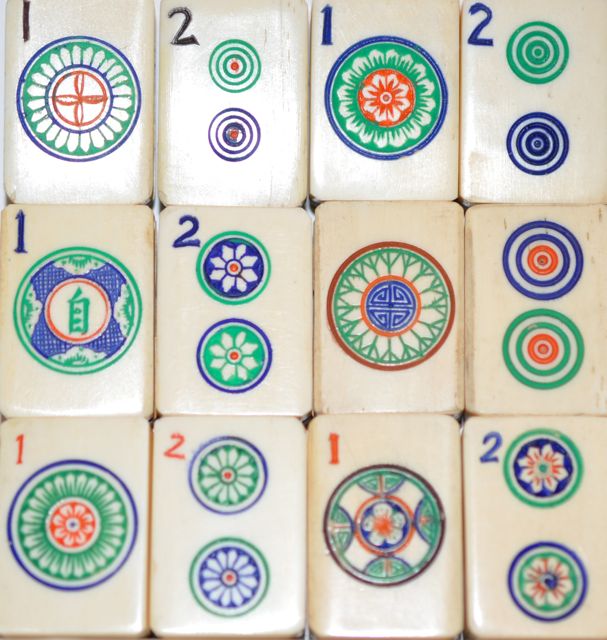
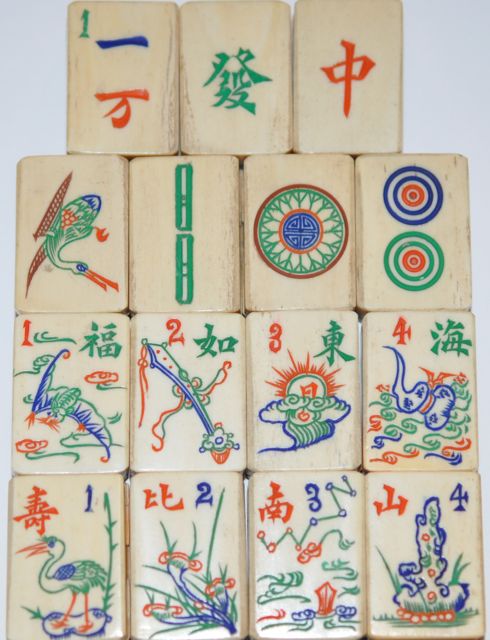
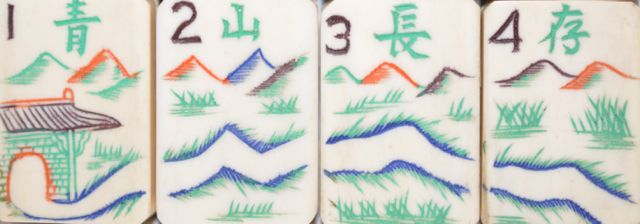

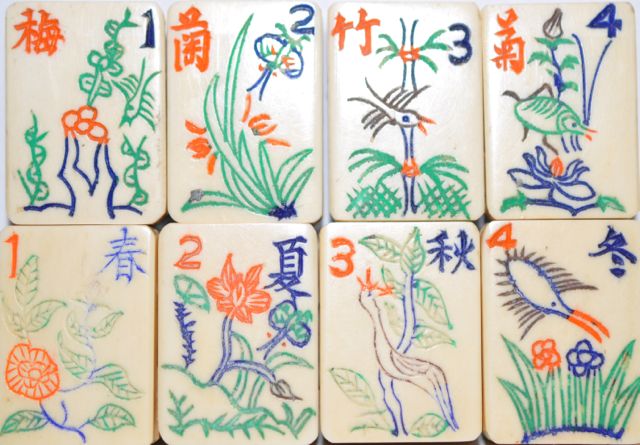
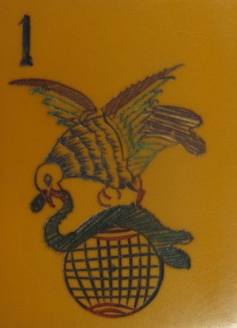
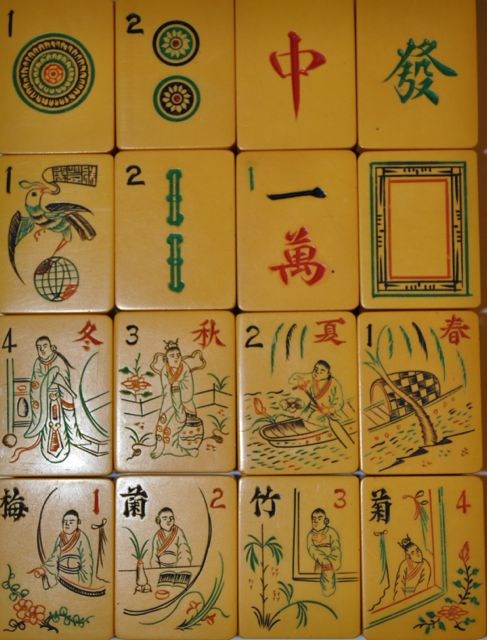
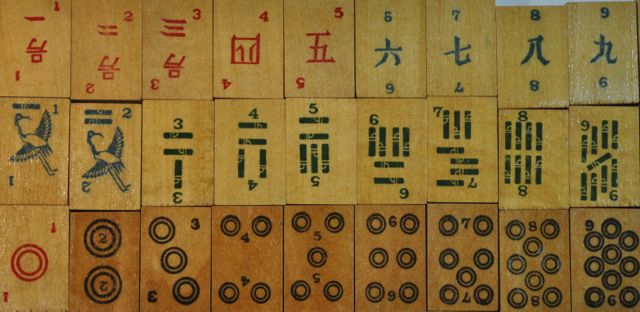

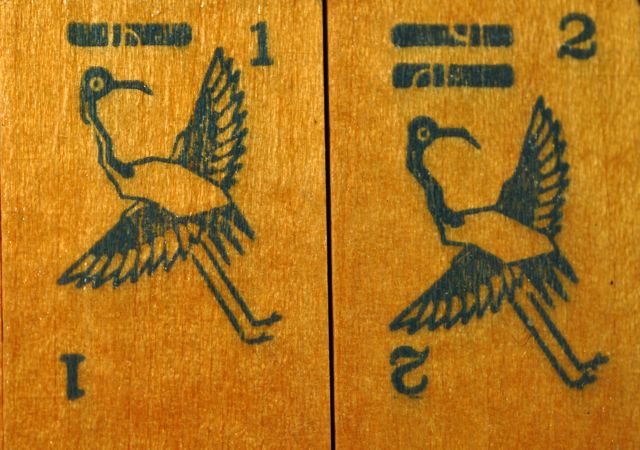
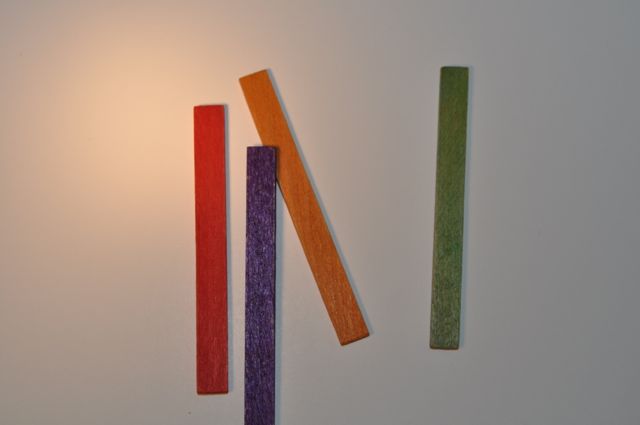
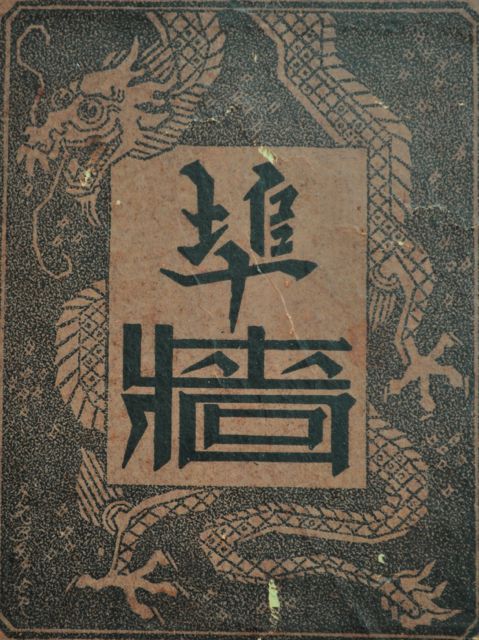
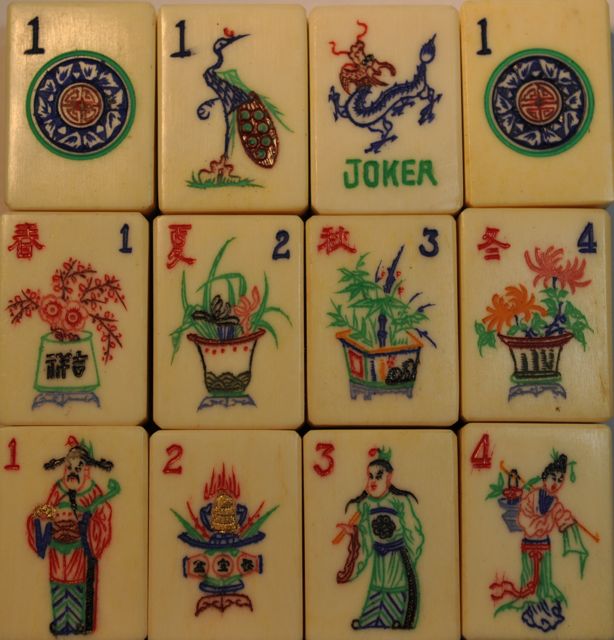 This delightful hand carved Mahjong set comes in a wood box with a sliding top panel. I love the Dragon Joker tile (I was lucky, there are 8 carved ones) and the One Dot with the symbol for longevity, Shou, in the center. The top row of Flowers are flowers: plum blossom, orchid, bamboo, and chrysanthemum, flowers usually seen when flowers are shown. The bottom row is a bit different: the rich man and the pot of gold, and two gods: according to Wikipedia probably Lü Dongbin, who dresses as a scholar and carries a sword, and Guanyin, the Goddess of Mercy. I love the gold paint used for the rich man, the pot of gold, and the spots on the peacock's tail.
This delightful hand carved Mahjong set comes in a wood box with a sliding top panel. I love the Dragon Joker tile (I was lucky, there are 8 carved ones) and the One Dot with the symbol for longevity, Shou, in the center. The top row of Flowers are flowers: plum blossom, orchid, bamboo, and chrysanthemum, flowers usually seen when flowers are shown. The bottom row is a bit different: the rich man and the pot of gold, and two gods: according to Wikipedia probably Lü Dongbin, who dresses as a scholar and carries a sword, and Guanyin, the Goddess of Mercy. I love the gold paint used for the rich man, the pot of gold, and the spots on the peacock's tail.